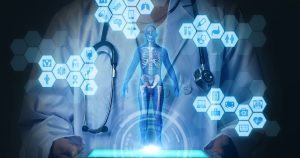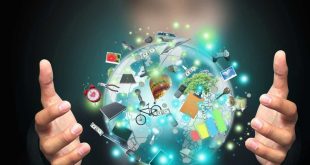Technology is rapidly changing the landscape of healthcare, changing the way we treat, diagnose, and prevent illness. Utilizing cutting-edge technology can improve patient care and simplify processes in the healthcare sector. Let’s look at the different ways that technology is changing the way we work.
Telemedicine
Definition and Importance
Telemedicine is the application of technology based on telecommunications to offer health services via the Internet. This technique has gained enormous popularity, particularly during the COVID-19 pandemic. Patients can consult health professionals from the comfort of their homes.
Benefits of Telemedicine
Telemedicine can provide many benefits, including increased accessibility to healthcare, specifically for those living in remote areas. It cuts down patient travel time and expenses and the strain on healthcare providers. Telemedicine also facilitates the constant monitoring of chronic illnesses by remote consultations.
Challenges and Limitations
Although it has its benefits, it also has limited access to high-speed Internet in certain regions, possible privacy concerns with data, and the need for a robust digital infrastructure. Securing the patient’s data is a crucial matter.
Electronic Health Records (EHRs)
Evolution of EHRs
Electronic Health Records (EHRs) evolved from basic electronic versions of paper records into comprehensive systems that connect patient data across various healthcare settings and enable sharing patient data between healthcare providers.
Advantages of EHRs
EHRs improve the accuracy of patient data, reduce the need for duplicate tests, and increase overall patient treatment. They also make administrative tasks more accessible, allowing healthcare professionals to focus on patient care instead of paperwork.
Problems related to EHR Implementation
Implementing EHRs could be expensive and lengthy. There are also concerns over the interoperability of various EHR systems and the possibility of security breaches.

Artificial Intelligence and Machine Learning
AI in Diagnostics
Artificial Intelligence (AI) has significantly improved diagnostics, helping doctors identify ailments more precisely. AI algorithms study medical images, including X-rays and MRIs, to identify abnormalities the human eye could miss.
Machine Learning in Predictive Analysis
Machine learning models can predict the severity of disease outbreaks, patient outcomes, and the risk of complications by analyzing vast quantities of information. This capability to predict is a basis for the healthcare system to take proactive steps.
AI in Personalized Medicine
AI is changing the face of the personalization of medicine by tailoring treatments to each patient according to their genetic makeup and lifestyle variables. This method increases the efficacy of treatments and reduces side consequences.
Wearable Technology
Types of Wearable Health Devices
Wearable technology includes smartwatches, fitness trackers, and medical monitors. These devices track physical activity, sleep patterns, heart rate, and other health-related metrics.
Benefits of Wearable Technology
Wearable devices allow users to manage their health by providing immediate feedback on their physical health. They also permit healthcare providers to monitor patients remotely and intervene if necessary.
Data Privacy Concerns
The increasing use of wearables raises questions regarding data security and privacy. It is essential to ensure that health information is secure from unauthorized access.
Robotics in Healthcare
Surgical Robots
Robotic surgery systems, such as the da Vinci Surgical System, permit minimally invasive procedures with more excellent quality and accuracy. The robots convert the surgeon’s hand movements into smaller, precise movements of the surgical instruments.
Robots in Patient Care
Robots aid in patient care by assisting in tasks like taking medication, lifting patients, and offering companionship to older or disabled patients.
Future of Robotics in Healthcare
The future of healthcare robotics is bright, with improvements expected in areas such as rehabilitation robots, automated diagnostic tools and even more advanced surgical robots.
3D Printing
3D Printing in Prosthetics
3D printer technology revolutionizes the design of prosthetics, making them much more affordable and flexible. Patients can now access prosthetics tailored to their particular requirements and anatomical characteristics.
Bioprinting and Its Potential
Bioprinting, a method of 3D printing utilizing living cells, can develop complex organs and tissues. The technology could allow the production of organs suitable for transplantation and address the shortage of organs for donation.
Customization of Medical Devices
3D printing enables the modification of medical devices, including surgical instruments and implants, which can improve their functionality and fit.
Genomics and Personalized Medicine
The Role of Genomics
Genomics, the research of a person’s genes and their interaction is important in understanding disease and identifying personalized treatments. Genetic tests can help identify people at risk of developing certain diseases and help determine how to prevent them.
Personalized Treatment Plans
Personalized medicine uses genetic information to create treatment plans specific to each patient. This method increases the efficacy of treatments and reduces the risk of adverse reactions.
Ethical Considerations
Genetic data has ethical implications, such as privacy concerns and consent and the possibility of discrimination based upon genetic data. It is vital to address these issues to warrant the proper use of genomic data.
Blockchain Technology
Blockchain for Secure Data Sharing
Blockchain technology is an efficient way to transfer medical information across multiple platforms while preserving patients’ privacy. Every transaction is recorded on an uncentralized ledger. This makes it impervious to tampering.
Benefits for Patient Privacy
Blockchain increases patients’ privacy by giving them control of their personal data. Patients can either grant or debar access to medical records when needed.
Challenges in Implementation
Blockchain in healthcare presents difficulties, such as high technological complexity, high costs, and the need for wide adoption to make it effective.
Mobile Health
Rise of Health Apps
The popularity of health applications care has helped make health care more accessible. The apps prepare services that range from fitness monitoring to support for mental health and managing chronic diseases.
Benefits of mHealth
mHealth increases patient engagement, allows remote monitoring, and provides essential health information to users. It also assists in managing chronic illnesses through constant monitoring and alerts.
Concerns and Limitations
However, despite its many benefits, mHealth faces limitations such as data security concerns and the digital divide, in addition to the requirement for regulation to assure the security and reliability of health applications.
Internet of Medical Things
Connected Medical Devices
The Internet of Medical Things connects medical devices to the Internet, making it possible to collect and analyze data in real-time. Some examples include insulin smart pen-connected inhalers and insulin pens, as well as remote monitoring devices for patients.
Impact on Patient Monitoring
IoMT improves patient monitoring by providing continuous information on their health status. This data is updated in real time, allowing quick interventions to improve patient outcomes.
Security Risks
Medical devices’ connectivity can pose security threats, including the possibility of hacking and data breaches. Securing these devices is essential in securing patient data.
Virtual Reality (VR) and Augmented Reality (AR)
VR in Medical Training
Virtual Reality (VR) is used in medical education to replicate surgical and other medical procedures. The immersive experience allows medical professionals to practice and improve their talent without compromising the patient’s safety.
AR in Surgery
Augmented Reality (AR) assists surgeons by overlaying digital data, such as anatomical and real-time information, onto the real world. This improves the precision and the outcomes of complicated surgeries.
Therapeutic Uses of VR and AR
VR and AR are also utilized therapeutically to benefit patients in managing anxiety, pain, or post-traumatic stress disorder (PTSD). VR and AR provide immersive experiences that help keep patients occupied and help them from relaxation.
Big Data in Healthcare
Data Collection and Analysis
Big Data in health involves analyzing and collecting huge amounts of information related to health. The data can provide insights into patterns of illness, treatment efficacy, and patient outcomes.
Improving Patient Outcomes
By studying Big Data, healthcare providers can identify trends and make educated decisions to improve patient care quality. Predictive analytics may also benefit the early detection of diseases and preventive measures.
Privacy and Security Issues
The use of Big Data raises concerns about security and privacy. It is crucial to ensure the security of patient data and that data protection laws are in place.
Nanotechnology
Applications in Medicine
Nanotechnology involves manipulating materials on the nanoscale to create new medical devices and treatments. Applications include targeted imaging, drug delivery, and diagnostic methods.
Potential Benefits and Risks
Nanotechnology could bring benefits, including improved medication effectiveness and fewer adverse consequences. However, there are risks, like the potential for toxicities and long-term effects on human health and the environment.
Future Prospects
The future of nanotechnology in healthcare is promising, and research is ongoing to develop new diagnostic and treatment methods.
Conclusion
Technology revolutionizes healthcare and significantly improves patient treatment, diagnostics, and overall management. As these technology developments continue to advance, they have the potential to make healthcare affordable, efficient, and more personalized. Future healthcare appears promising, with technology playing an integral role in creating an improved world.
FAQs
Which is the most significant technology used in healthcare today?
The most significant technology transforming the healthcare field today is Artificial Intelligence (AI), which improves the diagnostic process, predictive analysis, and the ability to tailor medical treatment.
How can AI raise the quality of healthcare?
AI improves healthcare by analyzing massive amounts of data, allowing doctors to focus on providing precise diagnostics, anticipating disease onset, and designing individual treatment plans.
What are the potential risks associated with wearable medical devices?
The risks associated with wearable health devices include privacy issues for data, cybersecurity risks, and the reliability and accuracy of the information collected.
How can blockchain improve patients’ privacy?
Blockchain protects patients’ privacy by offering a safe and distributed platform for sharing information, allowing patients to decide who can access their health information.
What’s the future of Telemedicine?
The future of Telemedicine is promising, thanks to advances in technology that make remote healthcare more efficient and accessible, particularly for chronic disease management and rural health.
 Digital Business Trends Powering Growth With Digital Strategies.
Digital Business Trends Powering Growth With Digital Strategies.

